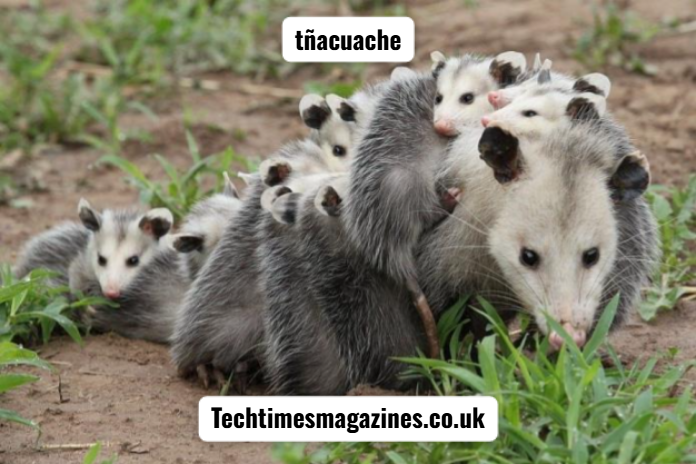
Introduction to the Enigmatic Tñacuache
The word tñacuache may sound unfamiliar to many, but it carries deep cultural, ecological, and even mystical significance in several Latin American regions. A derivative of the more commonly known “tlacuache” in Mexican Spanish, tñacuache typically refers to a specific type of opossum. However, its identity extends beyond mere zoological classification. From myths and traditions to modern encounters and scientific discussions, the tñacuache weaves itself into a fascinating narrative worth uncovering.
This article explores everything about tñacuache in a way that combines real-world information, user-focused queries, and thoughtful analysis. If you’ve ever wondered what a tñacuache is, why people talk about it online, or what role it plays in the environment or folklore, this comprehensive guide delivers the answers—without robotic language or keyword stuffing.
What Is a Tñacuache Really?
Understanding Its Biological Identity
The tñacuache, often confused with its cousin species “tlacuache,” belongs to the opossum family, specifically within the genus Didelphis. It is a marsupial native to the Americas, particularly found in Mexico and Central America. Unlike placental mammals, marsupials carry and nurse their young in pouches, making their development highly visible and intriguing.
This creature typically has a grayish coat, a long prehensile tail, sharp teeth, and nocturnal habits. The tñacuache plays an important ecological role in pest control and seed dispersal. It’s often misunderstood due to its appearance, which some find intimidating, but it is, in fact, a harmless animal when left undisturbed.
Cultural Significance and Folklore
Myths and Legends Around Tñacuache
The tñacuache is deeply embedded in Mesoamerican mythology, particularly among the Aztecs and other indigenous cultures. According to ancient legends, the tñacuache was responsible for stealing fire from the gods and gifting it to humanity—much like the Greek story of Prometheus. This narrative has elevated the animal to a semi-divine status in local folklore.

In many rural areas of Mexico and Guatemala, people still recount stories where the tñacuache is a trickster figure, sometimes wise and sometimes foolish. These tales teach moral lessons and are often shared around campfires, preserving a centuries-old oral tradition.
Tñacuache in the Environment
Role in the Ecosystem
Beyond legends, the tñacue holds a crucial position in natural ecosystems. It acts as both predator and prey in various food chains. As an omnivore, it feeds on fruits, insects, small animals, and even garbage, making it a natural pest controller. By consuming overripe fruit and defecating the seeds, it assists in forest regeneration and biodiversity.
Moreover, scientists have noted that tñacuaches possess a unique resistance to snake venom, allowing them to hunt venomous snakes. This surprising trait has made them the subject of multiple ecological and biomedical studies.
Common Misunderstandings and Urban Encounters
Are Tñacuaches Dangerous?
One of the most frequent user queries is whether a tñache poses a threat to humans. The answer is no—tñacuaches are non-aggressive and often resort to playing dead when threatened, a defense mechanism known as “playing possum.” They do not typically bite unless cornered or provoked.
Unfortunately, urban expansion has led to more frequent encounters between humans and tñacuaches. They are often seen scavenging through trash bins or crossing roads, resulting in accidents or unnecessary extermination. Education about the animal’s harmlessness can reduce panic and promote peaceful coexistence.
The Internet’s Obsession with Tñacuache
Tñacuache Memes and Social Media Buzz
Over the past few years, the term tñacuache has exploded on platforms like TikTok, Facebook, and Reddit, thanks to memes that exaggerate the animal’s bizarre expressions and behaviors. Often paired with humorous captions, these images have turned the tñache into an online icon of chaos and awkwardness.
Some creators use the tñacuache as a symbol of relatable human struggles—staying up too late, eating junk food, or being overwhelmed by daily stress. This ironic portrayal has introduced the animal to younger generations, blending humor with awareness.
Tñacuache vs Tlacuache – What’s the Difference?
Linguistic and Regional Variations
Though often used interchangeably, tñacuache and tlacuache may refer to the same animal but are pronounced or spelled differently based on regional dialects. “Tlacuache” comes from Nahuatl (the Aztec language) and is widely used in Mexico. Tñache might be a phonetic or cultural variant, adopted in specific local dialects or communities.
This difference isn’t necessarily scientific but rather sociolinguistic. Understanding the context in which either term is used helps clarify communication, especially in cultural or academic discussions.
Tñacuache Behavior Patterns
Nocturnal Life and Unique Traits
Tñacuaches are nocturnal creatures, meaning they are most active at night. They build nests in tree hollows, under homes, or in abandoned burrows. During the day, they stay hidden, only emerging after sunset in search of food. They are solitary by nature and communicate using clicks, hisses, and sneezes.
Another notable trait is their opposable thumbs on their hind feet, which help them climb trees and grip branches with precision. Combined with a prehensile tail, these adaptations make the tñacuache an expert climber, despite its awkward ground movements.
Reproduction and Lifecycle
How They Raise Their Young
Like all marsupials, the tñacuache gives birth to very small, underdeveloped young that crawl into the mother’s pouch to nurse and grow. A single litter may contain up to 13 babies. After a few weeks in the pouch, the young begin clinging to their mother’s back, learning to explore their surroundings while staying safe.
The lifespan of a tñacche in the wild is relatively short—typically 2 to 4 years—due to predation and environmental hazards. In captivity, they may live longer, especially with proper care and a stable diet.
Real-Life Tñacuache Encounters
Human-Tñacuache Stories
Across Latin America, people often share real stories of stumbling upon tñacuaches in unexpected places—attics, garages, or even inside kitchen cabinets. While these encounters can be startling, most end harmlessly. Animal control experts advise gently ushering the animal out or calling wildlife professionals rather than harming it.
In some towns, locals have even adopted tñacuaches as unofficial pets or mascots, feeding them fruit and documenting their antics on social media. These stories reflect a growing appreciation and curiosity about an animal once viewed as a nuisance.
Quick Facts About Tñacuache
| Attribute | Details |
| Scientific Name | Didelphis virginiana |
| Lifespan | 2–4 years (wild), up to 6 (captivity) |
| Diet | Omnivore – fruits, insects, garbage |
| Nocturnal | Yes |
| Defense Mechanism | Plays dead, hisses, climbs trees |
Protecting the Tñacuache
Conservation and Awareness
While the tñacuache is not currently endangered, habitat destruction and urban hostility threaten its wellbeing. Pesticide use and vehicle collisions are also major threats. Protecting natural habitats, educating the public, and promoting humane pest control methods are essential steps in ensuring their survival.
Several environmental groups now use the tñacuache as a mascot for urban wildlife protection campaigns, emphasizing its misunderstood nature and ecological contributions.
Summary – Why Tñacuache Matters
- Plays a vital role in pest control and seed dispersal.
- Represents rich cultural stories in Latin American folklore.
- Harmless to humans, often wrongly feared.
- Possesses unique biological traits like venom resistance.
- Becoming a popular symbol on social media and memes.
Tñacuache as a Teaching Tool
Education Through Nature
Educators and biologists often use the tñacuache to teach children and communities about biodiversity, ecosystems, and misunderstood animals. By turning fear into fascination, the tñacuache becomes a gateway to broader conversations about nature and conservation.

Classroom visits from rescued tñacuaches, virtual reality experiences, and illustrated children’s books all feature this animal as a star character, making science more relatable and engaging.
Table – Myth vs. Reality
| Myth | Reality |
| Tñacuaches are dangerous and attack people | They are shy, non-aggressive, and avoid humans |
| They spread diseases easily | They are less likely to carry rabies than other mammals |
| They’re pests with no benefit | They control pests and clean up waste in the wild |
Conclusion: The Real Story of the Tñacuache
The tñacuache is far more than just a scruffy-looking scavenger. It’s an ecological asset, a cultural icon, and a subject of viral memes that make us laugh and learn. By understanding this unique marsupial, we gain insight not only into the species itself but into our own relationship with nature and folklore.
Despite common misunderstandings, the tñacuache deserves respect and protection. Through education, awareness, and even humor, we can bridge the gap between myth and science. The next time you see a tñacuache—whether in the woods, your backyard, or on your Instagram feed—take a moment to appreciate its place in our shared world.
FAQs About Tñacuache
Q1: Is the tñacuache the same as a possum?
A1: Yes, the tñacuache is a type of opossum found in the Americas, often referred to as “tlacuache” in Mexico.
Q2: Can I keep a tñacuache as a pet?
A2: While it’s not recommended to keep wild animals as pets, some people care for orphaned tñacuaches with professional advice.
Q3: Are tñacuaches beneficial to the environment?
A3: Absolutely. They help control insect and rodent populations and contribute to seed dispersal in forests.



